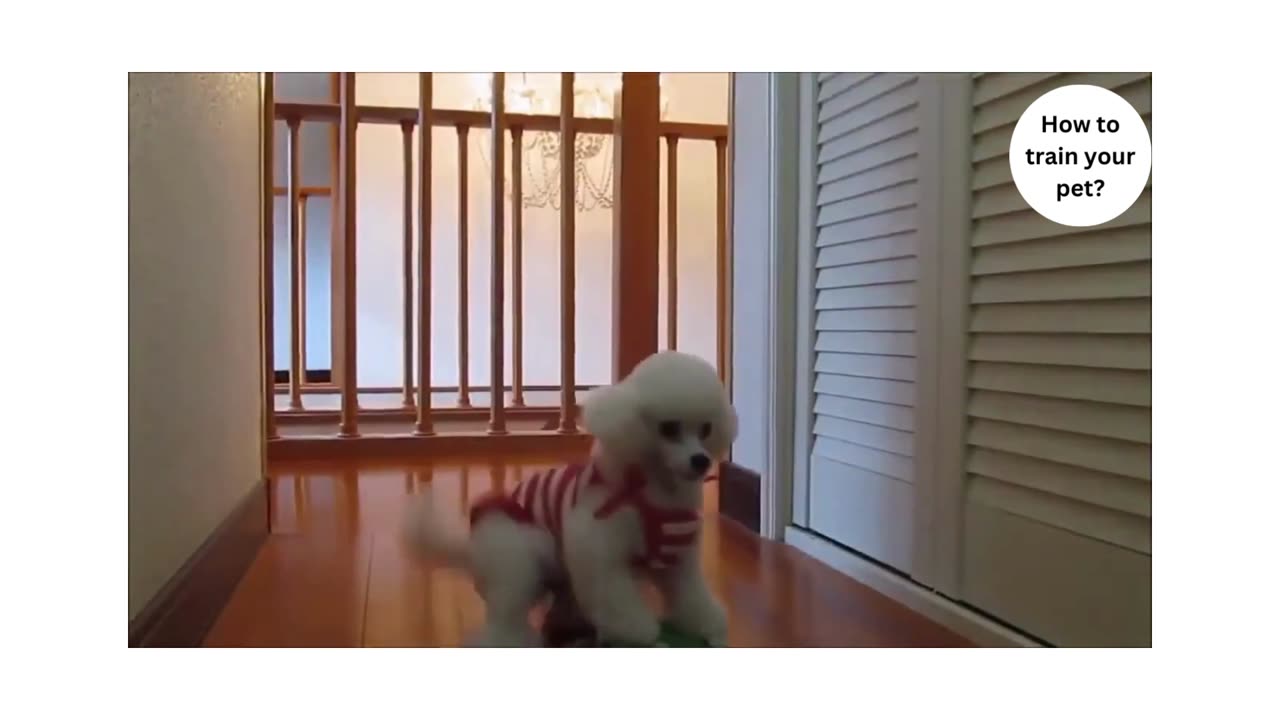Premium Only Content

How to train your pet
Training your pet involves a combination of patience, consistency, positive reinforcement, and clear communication. Here's a brief overview of the steps to train your pet:
Choose the Right Time: Start training when your pet is in a calm and receptive mood, typically after they've eaten or exercised.
Use Positive Reinforcement: Reward good behavior with treats, praise, or affection. This encourages your pet to repeat those behaviors.
Start with Basic Commands: Begin with fundamental commands like "sit," "stay," and "come." Use simple, one-word commands.
Use Consistent Cues: Use the same words and gestures each time you give a command. This helps your pet associate the word or action with the behavior you want.
Short Sessions: Keep training sessions short and frequent, about 10-15 minutes each, to prevent boredom and frustration.
Be Patient: Understand that learning takes time. Don't punish your pet for mistakes; instead, redirect and reinforce correct behavior.
Socialization: Expose your pet to various people, animals, and environments to help them become well-adjusted and comfortable in different situations.
Leash Training: Teach your pet to walk on a leash without pulling. Reward them for walking calmly by your side.
House Training: Establish a routine for bathroom breaks and reward your pet when they eliminate outside. Clean accidents indoors promptly to remove the scent.
Avoid Negative Reinforcement: Refrain from using physical punishment or yelling, as it can create fear and mistrust.
Stay Consistent: Ensure that all family members use the same commands and follow the same rules to avoid confusing your pet.
Advanced Training: Once your pet masters basic commands, you can move on to more advanced skills or tricks.
Seek Professional Help: If you encounter difficulties or have a particularly challenging pet, consider enlisting the help of a professional dog trainer or behaviorist.
Remember that every pet is unique, and training may take longer for some than others. Building a strong bond based on trust and positive interactions is key to successful pet training.
-
 LIVE
LIVE
vivafrei
1 hour agoMurder of Jamie White Update w/ Breanna Morello! Gavin Newsom's Hell-A! "Ontario Men" & MORE!
9,076 watching -
 LIVE
LIVE
Darkhorse Podcast
2 hours agoThe 280th Evolutionary Lens with Bret Weinstein and Heather Heying
666 watching -
 LIVE
LIVE
The Quartering
2 hours agoICE Riots GET WORSE, Walmart Funding RIOTS Saturday, Drag Queens OWNED, Female John Wick BOMBS!
10,565 watching -
 LIVE
LIVE
Awaken With JP
1 hour agoLA Burns Peacefully, Trump/Elon Divorced - LIES Ep 95
1,538 watching -
 LIVE
LIVE
Due Dissidence
5 hours agoGreta DEPORTED From Israel, Tim Dillon CALLS OUT Palantir Payoffs, Mamdani SURGES, Marines in LA
1,509 watching -
 24:24
24:24
Nick Shirley
5 hours agoLos Angeles Has Fallen… Anti-ICE Protesters Takeover the City
141 -
 1:24:27
1:24:27
Ben Shapiro
3 hours agoEp. 2214 - Ben Shapiro Show
21.2K19 -
 DVR
DVR
Tommy's Podcast
15 hours agoLA Riots | Dr. Dale Comstock (TPC #1,763)
8201 -
 LIVE
LIVE
StoneMountain64
2 hours agoBunker 0 Warzone on Controller into SIEGE X LAUNCH DAY.
109 watching -
 2:54:04
2:54:04
The Dana Show with Dana Loesch
3 hours agoWATCH: The Dana Show LIVE on Rumble! 06-10-25
52.1K4